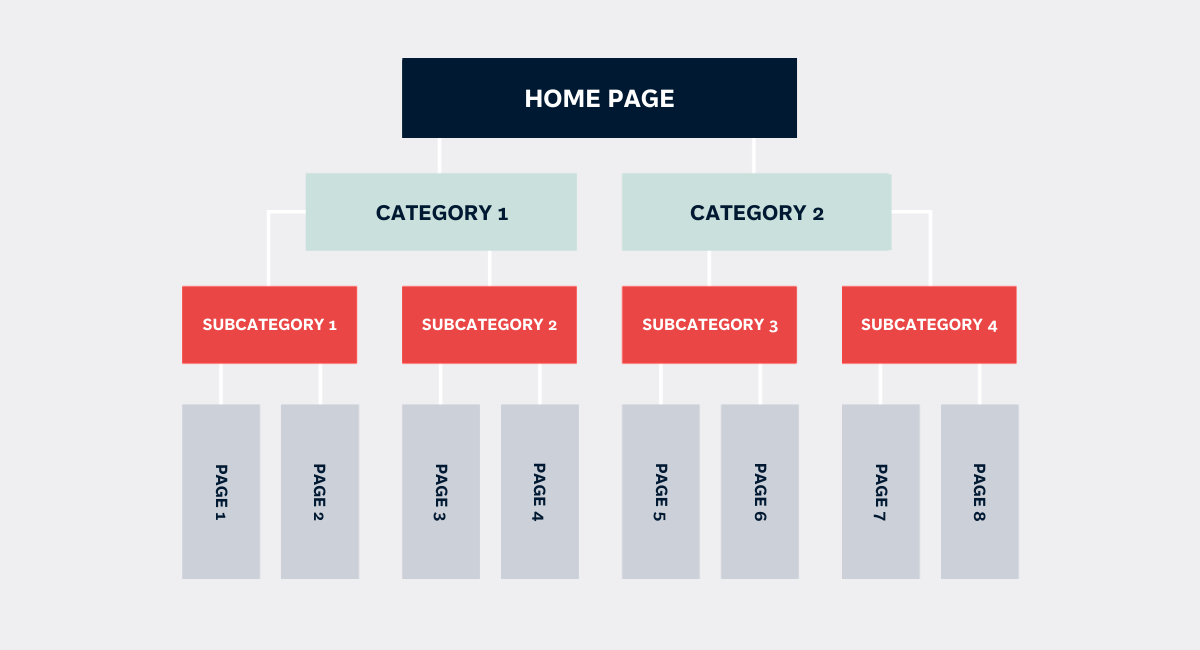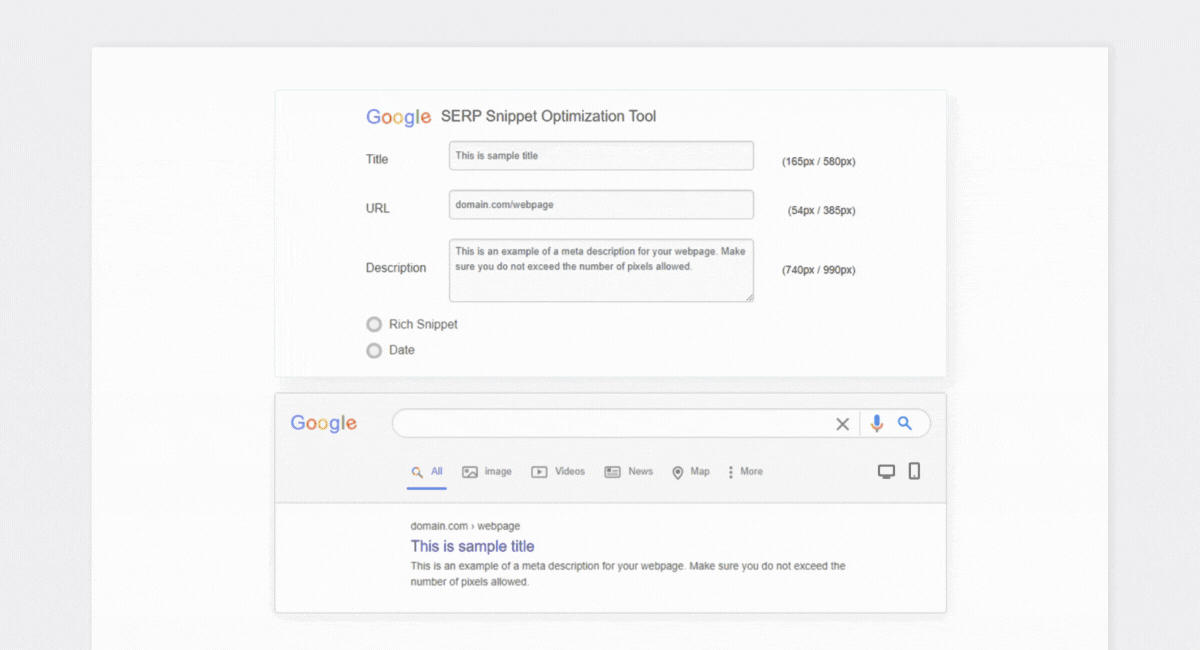Redesigning a website is not an easy task. It requires proper planning that ensures you’ll cover a vast variety of tasks to cross off the list. No wonder it’s easy to get lost along this way. In this piece we’ll unveil the secrets of how to create a SEO checklist for website redesign. Read on!
Why is SEO important in the website redesign process?
The risks and costs of neglecting SEO in the website redesign process are just too serious not to take them into account. Not paying attention to aspects such as navigation, performance and speed, redirections or analysis is a straight shot to a painful dive in traffic and leads. Consequences of decrease in search engine ranking will directly impact the bottom line of your business.
Think of it that way - Google has to learn your redesigned website from scratch and update its understanding. The harder you make this job, the bigger hit you’ll take. But, a correct approach and redesigning a website with SEO in mind will help you stay on top of that situation and facilitate topping the rankings, just the way you like it.
Analyse your current site status
A well-planned and executed website redesign is a great opportunity to hit plenty of birds with one stone. It can help you with changing the site’s hierarchy, boost poorly ranking yet important pages, merge content with duplicated targets, delete SEO-redundant pages or implement other significant technical SEO changes. With a good plan, you can redesign a website without losing SEO.
But first things first - you have to know where your starting point is to compare the metrics before and after the migration. Only then you’ll know how successful (or not) the whole website redesign process was when it comes to SEO.
What to look at? Consider aspects such as:
- top keywords you rank at,
- what’s your domain authority (which is a parameter measured by tools such as Ahrefs),
- what’s your browser traffic measured in number of unique visitors,
- what are your current conversion rates,
- what’s the average time spent on site,
- which subpages deliver most business value (traffic and conversion).
A good SEO audit as a base for setting benchmarks in the fields above is crucial to evaluate the impact on SEO of the redesign process. It will also help you understand if this migration met your expectations and brought you closer to your initial objectives for the change.
SEO Checklist – next steps before website launch
Once you know what your goal and starting points are, it’s time to prepare the website redesign SEO checklist. It is crucial to diligently plan and methodically execute the SEO strategy step by step. This way you’ll know if you’re on the right path and make sure that nothing went unnoticed.
The following SEO redesign strategy is just a suggestion of the most important aspects to take into consideration. The list can be significantly longer, but once you have these basics covered, you can rest assured that your search rankings and traffic won’t drop overnight.
Here is the list of the key steps of your website redesign SEO plan:
Plan your website architecture
If your website redesign is more complicated than just changing the design layout, it is important to devote meticulous attention to correctly designing the architecture and structure of the new website. Structuring and organizing your content helps Google to understand the topical expertise of your web assets and rank them accordingly.
The most common approach is to follow ‘The Pyramid’ scheme where the main page leads to other key subpages (like categories) or sales-focused pages, that then lead further down the website and dive deeper into details (such as product categories, for example). This way you’ll not only facilitate the job of the search engine bots to understand the importance and relationship among pages, but will also help users and search engines to navigate through your website and find relevant content.
Nowadays, most pages are enriched with content section, like a blog for example. It is also important to take this section into account when planning website structure. Main link to the blog section should be present in the top navigation bar and links to blog articles should be placed in subpages related to specific blog content. It’s a good idea to link from category to blog article as an additional supplement for the users.
Remember - your website navigation should satisfy users first. Don’t plan navigation just from the SEO point of view. Google will appreciate this!
Optimize your website navigation
Let’s continue with the architecture of navigation that you plan to adopt on your website. It is essential to connect pages with similar content and combine them together. As an example - a blogpost describing the benefits of SEO audit services should lead the reader directly to the landing page with the offer of such services, and vice versa.
But there’s more to optimizing navigation than just that! A best practice is to implement the following:
- the subpages that have similar content should be grouped in categories;
- there should be an internal search engine implemented on the website;
- the subpages should be interlinked based on topics they cover;
- ensure users have an easy way back to the previous page and to the home page;
- include a simplified page map in the bottom menu (with at least main landing pages and categories).
By implementing the above you can optimize your website navigation for the benefit of both the users, as well as your SEO results.
Create proper redirects map
When preparing for a website redesign SEO strategy, redirecting old pages to new ones is - by many SEO experts - indicated as the single most important step of the process to take care of. Especially, when URL addresses of all or some of the pages changed. If you do not redirect old addresses to new ones, it will result in plenty of 404 errors which will seriously harm your website performance in Google, not to mention diminishing the user experience.
We all know how frustrating it is to land on a 404 when trying to access relevant content. But this scenario backfires with even more damage than ‘just’ user frustration. It can ruin your overall SEO score by losing those precious high- ranking keywords with no guarantee of getting them back!
Why? These old pages have been climbing the top of the results ladder for years, and it all can go out the window without a proper redirecting plan. That is why it is imperative to carefully prepare and implement a redirects strategy, where you show Google where the new version of your old content is - category by category, product by product, article by article.
But what if after redesign there’s no continuation of a particular website? In this case you need to redirect the old version to the closest possible substitute. For example - if you’re deleting a subpage selling green shoes, then you should redirect the traffic to the main category of shoes.

How to do it? The search engine recommends using a 301 (permanent) redirect for this purpose. By using this redirect you’ll tell Google that this particular URL has been permanently moved to a different address, and that it should automatically redirect all the traffic from the old website to the new one instead. This is the closest possible way to staying on top of SEO damage when preparing a website redesign SEO checklist.
Create your title tags and meta descriptions
Preparing a new version of your website is a great opportunity to optimize the title tags and meta descriptions of your subpages. These are the elements that are directly displayed in the search engine in the search results. It is important to make sure they include a call to action and all the necessary key words in the prescribed number of characters available.
You’ll find plenty of tools useful in simulating how title tags and meta descriptions will look like in the search engine. Leverage tools such as HigherVisibility to make sure you’re on track with your SEO!
Create a sitemap
Another step when preparing a website redesign SEO process is to create a sitemap. A sitemap is a file in which you provide all the necessary information about pages, subpages, files, videos etc., that your website includes, as well as the description of the relationships between them.
You need a sitemap especially when your site is really large, it contains a large archive of isolated or not well-linked content pages, or when your site has a lot of rich media content.
Use an xml format and upload it to the Search Console tool to indicate the new site structure. This way you will increase the speed of indexing new URL addresses after migrating the website and make the Google bot crawls through your web assets more efficiently.
Plan for a Responsive Web Design
Planning for a responsive web design is a very broad topic, but with mobile devices growing ground and being accountable for more than half of the global website traffic, you just can’t afford not including this step in your website redesign SEO checklist.
To properly grasp this matter, let’s start with a few words of context on how Google measures the performance and speed of your website, as this aspect is hard to understand and often confusing. Recently, Google announced a new ranking based on page experience and measured by a metric called the Core Web Vitals.
The pillars of page experience are focused around:
- loading performance,
- responsiveness,
- and visual stability.
To measure these pillars, Google introduced the Core Web Vitals metrics:
- Largest Contentful Paint: how long does it take for the largest piece of content to appear on the screen.
- First Input Delay: how long does it take for the website to respond to the first interaction.
- Cumulative Layout Shift: how visually stable is your website.
You can measure your Core Web Vitals metrics with tools such as Lighthouse, PageSpeed Insights or straight from the Search Console tool.
Why is it important? If, when redesigning a website, you focus on performance, efficiency and responsiveness, you’ll streamline the User Experience of your website, thus increase the Core Web Vitals score and in consequence, improve your overall SEO ranking. UX directly affects the bottom line of your business!
Other crucial aspects of responsive design are, for example:
- mobile-friendliness by design,
- using a responsive, automatically adjustable website template,
- blocking irritating pop-ups and interstitials,
- choosing a font and spacing that make the content readable on both desktop and mobile devices.
What to do after launching a redesigned website?
Sounds like a lot of work? Well, it is a lot of work! But if you want to make your website redesign a blast, preparation and execution is key.
And what after ticking off all the boxes from the website redesign SEO checklist? Time for even more work related to verification and measurement of your SEO-related actions.
Don’t forget that if your site has been around for a while, the search engine already has a fair level of understanding of how it was structured, what it was about and how relevant it was to specific search queries. With the redesign SEO checklist, our goal was to make it easier for the crawler and the user to find their ways around your new page. Now, we have to make sure our plan works!
Verify the site with the Google Search Console
Start with the Google Search Console. It is a useful and important (and free!) tool that provides all the details about the status of the website, 404 errors, indexation errors, speed, and performance statistics and many more. Used in combination with Google Analytics Console providing data about the browser traffic, the Search Console will be the first indicator of change. This is where you’ll see if everything went well, so do monitor both tools regularly.
Test your 301 redirects
Secondly, test your 301 redirects. You can do it manually, or you can automate this job by leveraging a tool such as Screaming Frog SEO Website Crawler or similar. It simulates how a Google crawler analyses your new website.
It is important to check if your 301 redirects are set up and work properly on a regular manner once or twice a week after migration. Anytime you come across a link showing a 404 error or a 302 temporary redirect, update it to a permanent 301.
Check analytics and index status
Next step is to check the analytics and index status. It is important to check (checking if subpages are indexed in search results properly indicates – if they are accessible for users to find them) . The Google index status is always important, but even more so just after a big migration. This is the key task for the first few weeks after a website redesign - to understand if you’re losing organic traffic. Naturally, a level of temporary decrease in the traffic (up to 30% or so) is a natural result of a relaunch related to introducing significant changes on the website, so don’t panic.
The more subpages your website has, the longer it can take for the search engine to fully reindex it. You can monitor the progress of indexation in Google Search Console. When the old web assets stop showing up in search results and all the referring traffic is successfully coming to the new website, it is safe to stop monitoring the process.
Check and Monitor Your Ranking Position
It’s time to go back to where we started! Last but not least, after implementing a redesigned website, you have to check and monitor the performance in relation to all the metrics you initially identified when preparing for the migration. Ranking positions and organic traffic are of course key indicators of SEO success (or failure) of the relaunch.
Analyze CTRs, bounce rate, heatmaps and traffic to understand if your content is relevant, website easy to navigate and crawled and indexed properly.
Summary
Wrapping things up - when preparing a website redesign SEO strategy, it is important follow these steps:
- determine the goal of migration;
- understand your current situation in respect of key metrics to measure before and after the change;
- prepare a SEO redesign strategy to implement step by step;
- execute the plan;
- monitor key metrics and respond to issues.
As straightforward as it sounds, in fact it is a complicated process with plenty of things that can go wrong. Even so, neglecting even a single SEO aspect whilst the migration can hinder, if not make it impossible to achieve overall success of the process.
When preparing for a website redesign, you should seek for more than just avoiding a disaster, but rather achieve relevant SEO improvement in rankings and traffic. In order to make the most of it, consider using the help of an experienced professional SEO, who will expertly guide you through this complex process.
At NoA Ignite, a powerhouse for digital growth, we worked with numerous businesses on preparing and executing a website redesign plan that increases SEO results. If you have any questions, talk to us!
Author
Related articles
![A well-crafted prompt doesn’t just work once. It works across teams, channels, and campaigns. It can be tweaked for new use cases and refined based on what performs best.]()
June 27, 2025 / 4 min read
Prompts are marketing assets: how to reuse, and scale them
Prompts aren’t throwaway lines. They’re repeatable, scalable assets that can streamline your marketing your team’s output. Learn how to build a prompt library that delivers.
![Woman using a wheelchair in the office settings]()
June 17, 2025 / 5 min read
What is accessibility and why it matters?
Accessibility ensures everyone — including those with disabilities or limitations — can read, navigate, and engage with your content equally.






